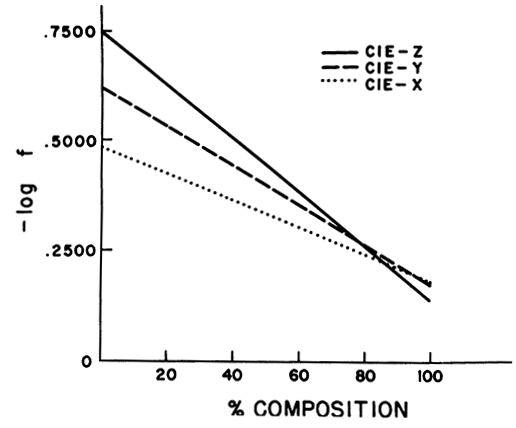A. C. Little, "Color Evaluation of Foods—Correlation of Objective Facts with Subjective Impressions," Sensory Evaluation of Appearance of Materials: a symposium sponsored by ASTM Committee E-12 on Appearance of Materials, and Committee E-18 on Sensory Evaluation of Materials and Products, 1973, American Society for Testing and Materials, Philadelphia
FIG. 3—A BLENDING DIAGRAM FOR A ROSÉ AND A WHITE WINE
The sample—Red and rosé wines are more or less pigmented with anthocyanins and can also contain various amounts of products of the browning reaction. Anthocyanins also act as indicators by changing color with pH. Red and rosé wines are thus far more complex in composition than white wines, at least so far as the components giving rise to color are concerned.
Given two starting wines and a color requirement, the composition of the required blend can be read from the chart directly.

![[ToC]](8_4toc_off.gif)